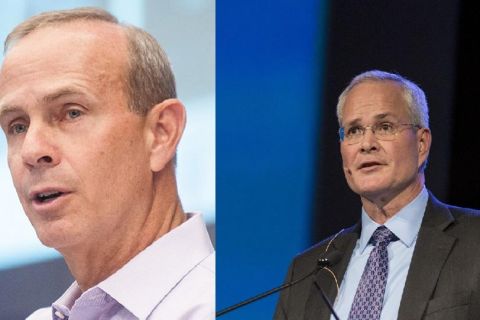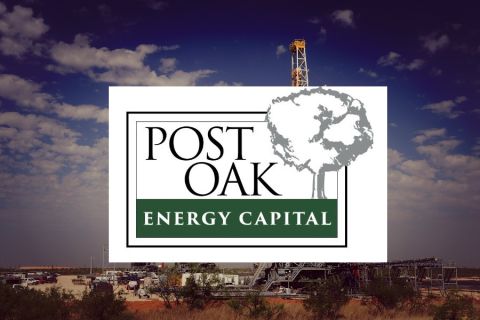FORT WORTH, Texas—Getting the economics and technology right to make carbon capture, utilization and storage (CCUS) projects a reality requires managing risks, having honest conversations and aligning objectives among government agencies, a trio of energy experts says.
As with all things energy, funding, politics and permitting remain roadblocks — particularly for the emerging CCUS industry.
As one expert remarked during Hart Energy’s SUPER DUG conference, “CO2 is not new, but it’s new.”
CCUS technologies are expected to play a crucial role in driving down emissions, whether it’s pulling carbon from fossil fuel-burning power plants for use or storage underground or using technologies alongside the production of blue hydrogen.

Assessing injectivity performance, potential seismic activity and plume monitoring, and ensuring containment of CO2 — along with preventing groundwater contamination — are among the technical risks that must be managed to get projects across the finish line, according to conference panelist Siddharth Misra, an associate professor of petroleum engineering at Texas A&M University.
“For these four risks, we need to have very good geophysical monitoring. … It starts from monitoring the plume, monitoring the reservoir, monitoring the wellbore, the seal, the above zone formation,” Misra said. “If we monitor all these things, we can ensure there’s no risk, and all these projects will end up with a good outcome.”
The U.S. alone has an estimated storage capacity of about 3,000 gigatons; however, the problem lies in the number of active CO2 storage sites, Misra said.
The U.S. operates just seven active sites—all deep saline aquifers—that store about 10 megatons of carbon per year (megatons/y), he said. Though 11 sites are under construction with 130 more in development for 200 megatons/y, storage will still be needed for nearly 1 gigaton of carbon per year, according to Misra.
“That will require us to develop one megaton scale project every week till 2040. That’s a pretty daunting task,” he said, adding the U.S. Department of Energy’s National Laboratories, oil and gas companies and storage companies have been working to develop technology to help reach objectives.
Storing CO2 safely in depleted oil and gas reservoirs has been getting interest.
“These depleted oil and gas reserves have stored gas for more than a million of years. So, if they can store gas, it can also store CO2,” Misra said. “This is a relatively new front. There’s not a lot of active sites focused on depleted oil gas reservoirs, and that’s where I see a lot of new innovations coming.”
A balanced approach
Looking aboveground, Summit Carbon Solutions COO James Powell pointed out the need for alignment amongst federal agencies as well as with state and local governments.

“A lot of states are trying to get primacy around storage of CO2 and that will help, but it’s that misalignment at the federal level, at the state level, and at the local level.”
Summit Carbon Solutions has undertaken a massive $5.5 billion project that aims to capture emissions from 32 ethanol plants in five states. Plans include building more than 2,000 miles of CO2 pipeline to gather the emissions from point sources and transport them to sequestration sites in North Dakota.
So far, about 80% of the rights of way have been acquired for transportation infrastructure with more than 130,000 acres of pore space leased for sequestration.
RELATED: Summit Carbon Solutions' Risky Approach to Midwest Carbon Express CCS Project
Projects need support from local, state and federal governments, and the projects must be attractive for each of them, according to Powell.
“You've got to convince these folks that [the project] makes sense for them,” he said, adding the dilemma is in trying to align goals and objectives in an emerging market. “Some people just don't see the need.”
Called the Midwest Carbon Express, Summit’s project spans some 82 counties. That can be a challenge.
Speaking to a public official or at a public meeting in Minnesota has a much different political climate than South Dakota, Nebraska or North Dakota.
“Just think about it politically. ... Our message has to be tailored,” Powell said. “The facts are the facts, but how we present it makes a difference.”
A handful of counties have passed moratoriums for ordinances restricting the construction of pipelines, he added, noting Summit spends a lot of time educating county officials.
“I’ve had many landowners say, well, I’ve got a natural gas pipeline running across my property. It’s been there for 30 years. I don’t care about that, but I’m scared about this. So, it’s educating the public and landowners about what is CO2.”
Decarbonization economics
Honest conversations need to take place around CCUS and decarbonization, added Nikhil Ati, partner for McKinsey & Co., given what has happened in energy markets in recent years.
“The change in energy markets today, I think, really brings to bear the need for investments in all types of energy,” and continued investment in infrastructure, Ati said. “If you ask me what is really needed is an honest, fact-based conversation, which allows for real decisions and real choices to be made.”

Speaking on the economics of decarbonization, Ati said a balanced approach is needed for energy security and energy affordability. While some companies have set decarbonization targets between 30% and 50%, others are still figuring out how to make it work from an investor and shareholder perspective.
Some decarbonization projects are not yet profitable.
“If you look across sectors, we would say about 20 to 30% emissions reduction is in the money today. These are typically actions associated with operational efficiency, capturing fugitive emissions, a bit of electrification,” Ati said, excluding what he called more needle mover items like carbon capture, switching to hydrogen as a fuel and large electrification projects.
About 20% of emissions from the petrochemical sector, for example, can be abated economically, Ati said; however, the rest of the emissions requires a carbon price of about $130. “And we are far away from that.”
Federal incentives such as 45V hydrogen credits and 45Q CO2 credits are moving the needle, but are inefficient at closing the economic equation, he said.
“We think bigger incentives are needed in the use cases to actually make things happen.”
Recommended Reading
Exxon, Chevron Tapping Permian for Output Growth in ‘24
2024-02-02 - Exxon Mobil and Chevron plan to tap West Texas and New Mexico for oil and gas production growth in 2024, the U.S. majors reported in their latest earnings.
CEO: Coterra ‘Deeply Curious’ on M&A Amid E&P Consolidation Wave
2024-02-26 - Coterra Energy has yet to get in on the large-scale M&A wave sweeping across the Lower 48—but CEO Tom Jorden said Coterra is keeping an eye on acquisition opportunities.
NGL Growth Leads Enterprise Product Partners to Strong Fourth Quarter
2024-02-02 - Enterprise Product Partners executives are still waiting to receive final federal approval to go ahead with the company’s Sea Port Terminal Project.
Permian E&P Midway Energy Partners Secures Backing from Post Oak
2024-02-09 - Midway Energy Partners will look to acquire and exploit opportunities in the Permian Basin with backing from Post Oak Energy Capital.
Matador Resources Announces Quarterly Cash Dividend
2024-04-18 - Matador Resources’ dividend is payable on June 7 to shareholders of record by May 17.






